This article was co-authored by Dina Garcia, RD, LDN, CLT. Dina Garcia is a Registered Dietitian, Nutritionist, and the Founder of Vida Nutrition and Conscious Living, her private practice based in Miami, Florida. Dina specializes in helping yo-yo dieters and binge eaters overcome food guilt, practice self-love, and rediscover self confidence. She has over 15 years as a dietitian. She received a BS in Dietetics from Ball State University and completed her supervised dietician practice at California State University, Fresno. She is certified as a Registered Dietitian (RD) by the Commission on Dietetic Registration and is a Florida Licensed Dietician/Nutritionist (LDN).
There are 13 references cited in this article, which can be found at the bottom of the page.
wikiHow marks an article as reader-approved once it receives enough positive feedback. In this case, 94% of readers who voted found the article helpful, earning it our reader-approved status.
This article has been viewed 293,373 times.
Eating the right snacks is an important part of a healthy lifestyle. Snacking provides fuel and boosts energy levels, as well as provides little delights throughout the day! By shopping smart, making mindful decisions, and being aware of ingredients, you can easily integrate healthy snacks into your life.
Steps
Making Nutritious Choices
-
1Choose vegetable-based snacks. Vegetables are low-calorie, low-fat, and naturally filling snacks. They are high in fiber and potassium and can help reduce your risk for various conditions. Try mini carrots, snap peas, marinated jicama sticks, fresh pea hummus, or parmesan-crusted zucchini fries. [1] [2] [3]
-
2Choose fruit-based snacks. Fruit offers a nutritious option to curb your sweet tooth. They are self-packaged, easy to take on-the-go, and great for busy people. Try apples, bananas, raisins, fruit leather (with no added sugar), or grape tomatoes. [4]Advertisement
-
3Choose snacks that are high in protein. Protein is an essential part of a healthy diet. It works to build tissue, muscle, and bones, and slows digestion, which keeps you fuller longer. Foods high in protein include fish and chicken, beans and legumes, nuts, kale, and whole grains. Try low-fat or non-fat greek yogurt with granola and fruit, hard-boiled eggs, Justin’s peanut butter packets, cheese sticks, edamame, or whole-grain protein bars. [5]
-
4Choose snacks that are high in fiber. Among many health benefits, fiber-based snacks are very filling in small quantities. Foods high in fiber include oats, citrus fruits, beans, barley, whole-wheat flour, potatoes, and bran. Try spiced chickpea nuts, pumpkin seeds (still in the shell), an almond-honey power bar, or a cranberry-nut mini loaf with flaxseed. [6]
-
5Don’t exclude sweet snacks. Healthy doesn’t mean sweet-free. If you love dessert, make sure to incorporate something sweet. A few healthy ideas include fruit crumble muesli bars, nut butter brownies or the three-ingredient brownie, apple cinnamon yogurt bites, and strawberry oatmeal bars. [7]
Limiting Calories
-
1Consider your portion size. Too much of a good thing can be harmful and overeating any type of food is unhealthy. Choose snacks in smaller portions that pack a punch. Snacks high in fiber and protein are more filling and have fewer calories. [8]
-
2Avoid processed and packaged snacks. These are full of empty calories and have a high amount of refined sugar and flour, fat, and sodium. They can also lead to fat gain, type 2 diabetes, fatigue, and food addiction.
-
3Avoid drinking your calories. Soda, juice, and smoothies are chock full of sugar. Limit or exclude soda completely. Make or buy all-natural juice that has no added sugar. Try making your own smoothies by mixing healthy ingredients such as blueberries and spinach, strawberries, bananas, and oatmeal, or peanut butter and almond milk. [9]
-
4Mix healthy sweets with healthy snacks. Enjoying your sweets alongside filling and healthy foods reduces your overall sugar intake. Trail mix with M&M’s or chocolate chips, yogurt or chocolate covered nuts, or a berry mix with a sprinkling of brown sugar or all-natural honey are great options. [10]
Shopping for Snacks
-
1Create a shopping list. Write down a list that eliminates unhealthy snacks and incorporates healthy snacks you want to try. Do your best to stick to the list, while also keeping an open mind to trying new things. [11]
-
2Be prepared to spend more money. The unfortunate truth is that organic, sugar-free, and low-fat items are generally more expensive. If you rely on fresh fruits and vegetables, you may find that you’re shopping more frequently and having to replenish food items in larger quantities. [12]
-
3Keep to the outer rim of the grocery store. This is where fresh fruit, vegetables, dairy, and fresh grains are stocked. The inner aisles carry processed and packaged foods such as potato chips, cookies, and frozen snacks. [13]
- Health food stores offer healthy options throughout the entire store. Feel free to wander unhindered!
-
4Read and compare the labels. If you want a packaged snack, make sure to read the ingredients on the label. A label that claims it has all-natural ingredients does not always mean it is a healthy choice. A common example is all-natural fruit juice, which is actually high in sugar. [14]
-
5Avoid indulgent purchases. Organic may be healthier, but it can still be an unnecessary and indulgent snack. Choosing a package of cookies just because they are organic will do nothing to improve your snacking habits. Stick with healthy food choices and avoid purchasing items that you can easily do without. [15]
Expert Q&A
Did you know you can get expert answers for this article?
Unlock expert answers by supporting wikiHow
-
QuestionHow do I choose healthy food?
 Dina Garcia, RD, LDN, CLTDina Garcia is a Registered Dietitian, Nutritionist, and the Founder of Vida Nutrition and Conscious Living, her private practice based in Miami, Florida. Dina specializes in helping yo-yo dieters and binge eaters overcome food guilt, practice self-love, and rediscover self confidence. She has over 15 years as a dietitian. She received a BS in Dietetics from Ball State University and completed her supervised dietician practice at California State University, Fresno. She is certified as a Registered Dietitian (RD) by the Commission on Dietetic Registration and is a Florida Licensed Dietician/Nutritionist (LDN).
Dina Garcia, RD, LDN, CLTDina Garcia is a Registered Dietitian, Nutritionist, and the Founder of Vida Nutrition and Conscious Living, her private practice based in Miami, Florida. Dina specializes in helping yo-yo dieters and binge eaters overcome food guilt, practice self-love, and rediscover self confidence. She has over 15 years as a dietitian. She received a BS in Dietetics from Ball State University and completed her supervised dietician practice at California State University, Fresno. She is certified as a Registered Dietitian (RD) by the Commission on Dietetic Registration and is a Florida Licensed Dietician/Nutritionist (LDN).
Registered Dietitian-Nutritionist
-
QuestionIs it possible to snack too much when pregnant?
 Melody Sayers, MS, RD, NASM-CPTMelody Sayers is a Registered Dietitian and NASM (National Academy of Sports Medicine) Certified Personal Trainer. She is the owner of Elevate Your Plate®, a private nutrition counseling and personal training practice, focused on an evidence-based, individualized, realistic, and results-driven approach to improving one's health. With over 8 years of experience, Melody has worked in both the private and public health sectors, helping both individuals and communities achieve milestones in managing their weight and preventing disease. She currently holds a Certificate in Adult Weight Management and a Master of Science in Nutrition, Dietetics, and Food Science from the California State University - Northridge.
Melody Sayers, MS, RD, NASM-CPTMelody Sayers is a Registered Dietitian and NASM (National Academy of Sports Medicine) Certified Personal Trainer. She is the owner of Elevate Your Plate®, a private nutrition counseling and personal training practice, focused on an evidence-based, individualized, realistic, and results-driven approach to improving one's health. With over 8 years of experience, Melody has worked in both the private and public health sectors, helping both individuals and communities achieve milestones in managing their weight and preventing disease. She currently holds a Certificate in Adult Weight Management and a Master of Science in Nutrition, Dietetics, and Food Science from the California State University - Northridge.
Registered Dietician & Personal Trainer
Warnings
- Be wary of the false effects of caffeine. Once your morning cup of joe wares off, you may end up feeling more run down.⧼thumbs_response⧽
- Avoid corn, cottonseed, and canola oils, as these are often genetically modified. Additionally, peanut oil has very high levels of pesticide residues.⧼thumbs_response⧽
- Stay away from anything that has high fructose corn syrup. This is an artificial sugar that contains several health hazards. Agave should also be avoided if you do not want fructose, as agave, advertised as a "healthy and natural" sweetener, also has a high amount of fructose. [17]⧼thumbs_response⧽
References
- ↑ https://medlineplus.gov/ency/patientinstructions/000338.htm
- ↑ https://www.myplate.gov/tip-sheet/healthy-snacking-myplate
- ↑ http://www.health.com/health/gallery/0,,20900449,00.html
- ↑ https://medlineplus.gov/ency/patientinstructions/000338.htm
- ↑ http://www.health.com/health/gallery/0,,20855303,00.html#hardboiled-egg-0
- ↑ http://www.eatingwell.com/recipes/18403/nutrient-focused-diets/high-fiber/snacks/
- ↑ https://www.bbcgoodfood.com/recipes/collection/healthy-treat
- ↑ https://medlineplus.gov/ency/patientinstructions/000338.htm
- ↑ https://www.move.va.gov/docs/NewHandouts/Nutrition/N17_LiquidCalories.pdf
- ↑ http://www.besthealthmag.ca/best-eats/healthy-eating/100-calorie-ways-to-satisfy-your-sweet-tooth/
- ↑ https://greatist.com/eat/healthy-grocery-list-for-one
- ↑ https://www.fao.org/organicag/oa-faq/oa-faq5/en/
- ↑ http://www.eatthis.com/best-supermarket-shopping-tips-ever
- ↑ http://www.eatingwell.com/article/15605/deceptive-food-labels-how-to-know-whats-truly-healthy/
- ↑ http://www.eatthis.com/best-supermarket-shopping-tips-ever
- ↑ http://www.eatthis.com/best-supermarket-shopping-tips-ever
- ↑ http://rationalwiki.org/wiki/Agave_nectar
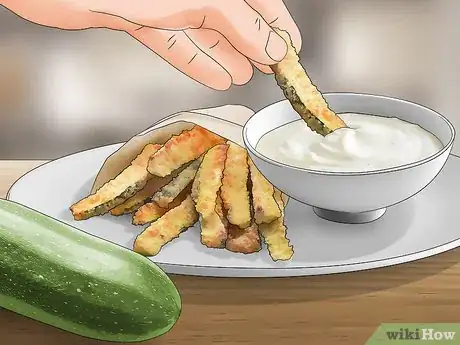
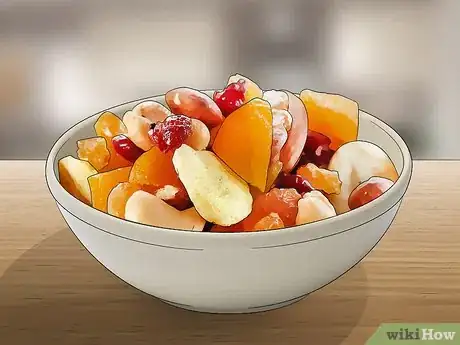
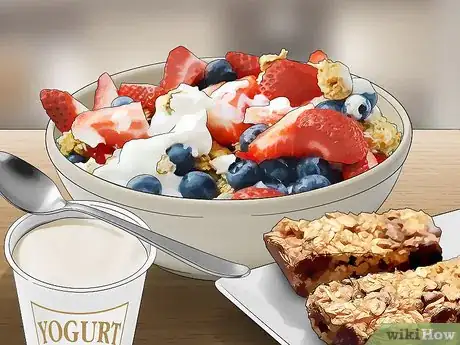

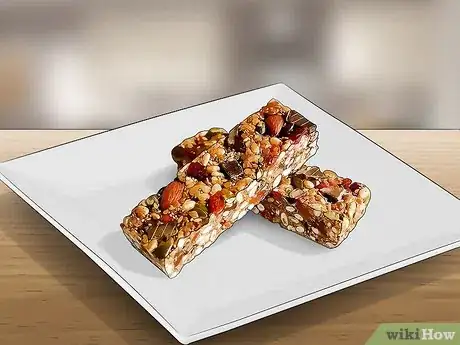
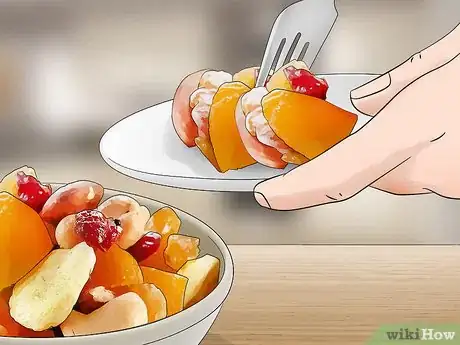

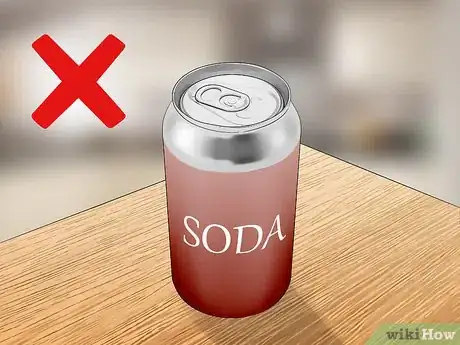
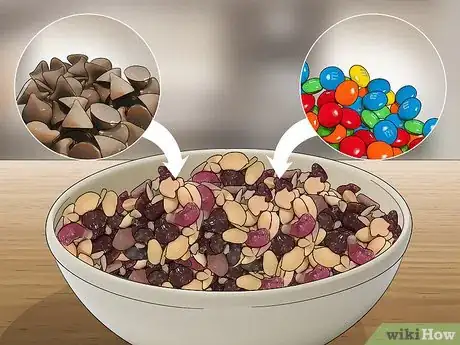
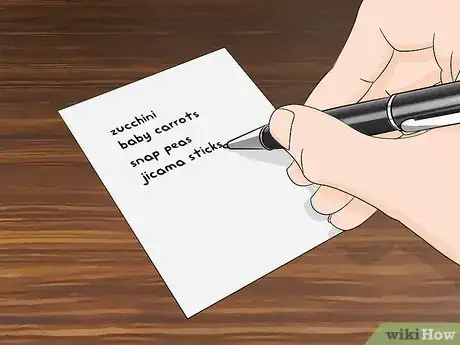
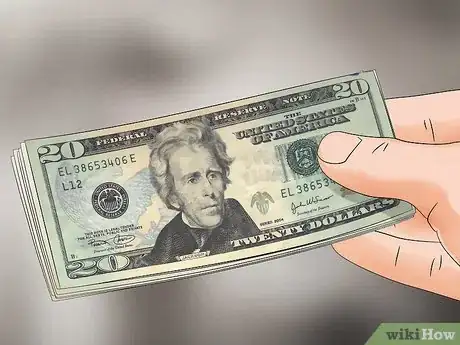
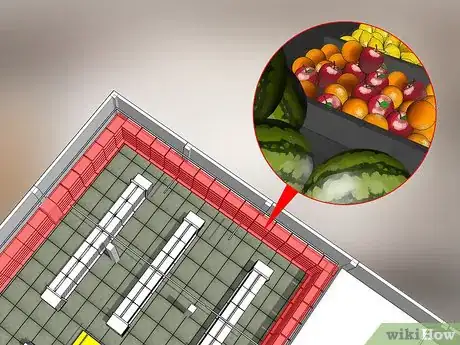
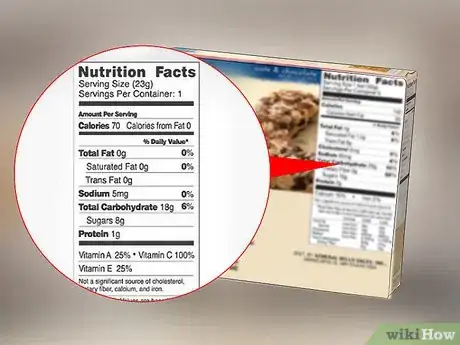




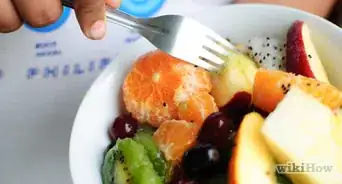



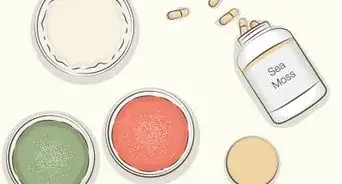
















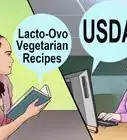




































Medical Disclaimer
The content of this article is not intended to be a substitute for professional medical advice, examination, diagnosis, or treatment. You should always contact your doctor or other qualified healthcare professional before starting, changing, or stopping any kind of health treatment.
Read More...